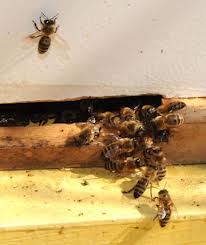by Roy Carter | Dec 19, 2014
Cross pollination is carried on mainly by insects, especially by honeybees, bumblebees, and to a very limited extent, other bee-like insects. The honeybee, of all insects, is most peculiarly adapted to the task of cross pollination. Most insects are dormant during...
by Roy Carter | Aug 1, 2014
Over everything the beekeeper does hangs the honey producer’s main objective: maximizing bee populations in time for major nectar flows. The next major nectar flows in north Florida will be spring; but beekeepers need to start working now in order to be ready for them...

by Judy Biss | May 16, 2014
The Bee Informed Partnership, in collaboration with the Apiary Inspectors of America (AIA) and the United States Department of Agriculture (USDA), conducted their eighth annual national survey of honey bee colony losses. Their preliminary summary report from the...

by Roy Carter | Jun 28, 2013
Honey bees laboriously gather their food (nectar and pollen) from flowers in bloom and store it in the hive for use when needed. When nectar sources are scarce or unavailable locally, bees are attracted by the honey stored in neighboring hives. Bees from strong...

by Doug Mayo | Apr 12, 2013
The University of Florida database of fact sheets called EDIS (Electronic Data Information Source) has many publications of interest to farmers and ranchers in Northwest Florida. http://edis.ifas.ufl.edu Each fact sheet has a PDF or printer friendly link in the top...



